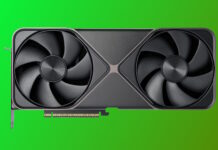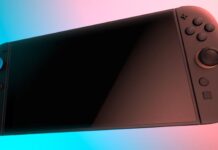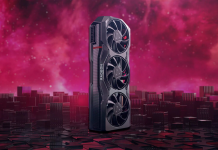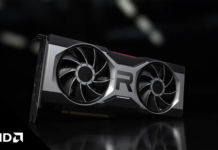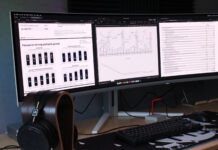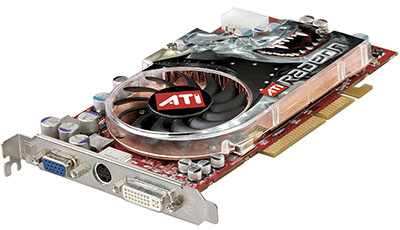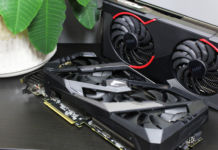Four weeks have passed since nVidia launched its GeForce 6800 Ultra. We spent one of those weeks, together with colleagues from all over the world, in Toronto with ATi. What ATi had to show us was . of course, the graphics card that has surfaced under the codename R420. The 14th of April was marked by us as the day nVidia put an end to ATi’s trend as ruler of the throne, but today it’s time for ATi to try to retake it. In the following pages we will show you if they’ve succeeded or not.
The new card that is going to fight against GeForce 6800 Ultra is now known under the name Radeon X800 XT. ATi were kind enough to send us a Radeon X800 Pro as well.
Just like NV40, the R420 has 16 rendering pipelines, GDDR3-memory with high clock frequencies and features beyond the ones offered by its predecessor. In a way, less is hidden below the shell of ATi than nVidia’s, since R420 is based a lot on “old” technology.
We were somewhat limited in our review on the GeForce 6800 Ultra, test-wise. Time, failing reference cards and other factors ultimately meant that we couldn’t run all tests, but most of all the different settings we had planned. This test, which will become a fair shootout between the NV40 and the R420, has a lot more detailed tests. Before we begin to measure the performance, we’ll have a look at the theoretics behind.

The Radeon X800-series consists of two officially launched cards: Radeon X800 Pro and X800 XT. Both cards are equipped with 256 MB memory and it’s fairly likely that the Pro-version also will be available with only 128 MB. Further we have reliable sources that indicates that there will be a 512 MB XT-version soon enough.
The thing that differentiates the Pro-version is that only has 12 pipeline and that the frequencies are a little lower; 475/900 MHz instead of XT’s 520/1120 MHz. Further more rumours are circulating that there will be a X800 SE will be launched with 8 pipelines and probably a bit lower frequencies than the Pro-version. More versions will surely be available later on but today we are focusing on the Radeon X800 Pro and Radeon X800 XT, which we are evaluating.
| Card/Circuit: |
GeForce FX 5950 Ultra / NV38
|
GeForce 6800 Ultra / NV40
|
Radeon 9800 XT / R360
|
Radeon X800 Pro / R420
|
Radeon X800 XT / R420
|
| Manufacturing process: |
0.13-micron
|
0.13-micron
|
0.15-micron
|
0.13-micron low-k
|
0.13-micron low-k
|
| Capacitors: |
~130 mil.
|
~222 mil.
|
~115 mil.
|
~160 mil.
|
~160 mil.
|
| GPU-frequency: |
475
|
400
|
412
|
475
|
525
|
| Pixel Pipelines/Pixel Fillrate: |
4 (8) / 1900 MP/s
|
16 (32) / 6400 MP/s
|
8 / 3296 MP/s
|
12 / 5700 MP/s
|
16/ 8400 MP/s
|
| TMU’s/Texel Fillrate: |
2 / 3800 MT/s
|
1 / 6400 MT/s
|
1 / 3296 MT/s
|
1 / 5700 MT/s
|
1 / 8400 MT/s
|
| Memory speed: |
950 MHz
|
1100 MHz |
730 MHz
|
900 MHz |
1150 MHz |
| memory/bandwidth: |
256-bit DDR / 30,4 GB/s
|
256-bit GDDR3 / 35,2 GB/s
|
256-bit DDR / 23,4 GB/s
|
256-bit GDDR3 / 28,8 GB/s
|
256-bit GDDR3 / 36,8 GB/s
|
| Pixel Shader: |
2.0a
|
3.0
|
2.0
|
2.0b
|
2.0b
|
| Vertex Shader: |
2.0a
|
3.0
|
2.0
|
2.0
|
2.0
|
| FSAA: |
2x RGMS, 4x OGMS + MS/SS comb.
|
4x RGMS + MS/SS comb.
|
6x RGMS + Gamma correction
|
6x RGMS + Gamma correction + Temporal AA
|
6x RGMS + Gamma correction+ Temporal AA
|
|
Centroid Sampling:
|
No
|
Yes
|
Yes
|
Yes
|
Yes
|
| Aniso: |
8x
|
16x
|
16x
|
16x
|
16x
|
| Out connections: |
1x VGA, 1x DVI and 1x “S-Video” (HDTV)
|
2x DVI and 1x “S-Video” (HDTV)
|
1x VGA, 1x DVI and 1x “S-Video” (HDTV)
|
1x VGA, 1x DVI and 1x “S-Video” (HDTV)
|
1x VGA, 1x DVI and 1x “S-Video” (HDTV)
|
| Recommended PSU: |
350w
|
480w
|
300w
|
300w
|
300w
|
| slots: |
2x
|
2x
|
1x
|
1x
|
1x
|
If we are to crown a king of performance based on the list above the choice is easy: Radeon X800 XT, as we are to look at the number of wins in the list, i.e. the given specifications which we have marked with bold text. When it comes to frequencies the X800 has a big advantage. If we on the other hand look at the features it’s GeForce 6800 Ultra which impresses the most with it’s support for Shader Model 3.0.
Note: During the time we wrote this review we got a message from nVidia that they have a new version of GeForce 6800 Ultra on the way: GeForce 6800 Ultra Extreme and also new drivers in form of Forceware 61.11. The Extreme-version of 6800U has a 50 MHz faster core which should increase performance quite a lot. Also the new drivers will increase performance significantly in some tests, Far Cry among others.
We asked for a new card but sadly it got stuck at the airport and we will not be able to get our hands on it in time, although we will work on an updated review as soon as possible.
ATi’s 525 MHz GPU outputs about 35 % more pixels per second than nVidia does. Hardly something you can ignore. With a pixel and texel fillrate of 0.84 terapixels per second this monster even makes NV40 look a bit crappy. With a fillrate at this level the card can draw more than 2100 pictures taken with a 4 MegaPixel-camera… per second. To reach these speeds ATi has chosen to use TSMC’s 0.13 microns low-k as their manufacturing process. The fact that the core has 62 millions less transistors than NV40 also contributes to why their GPU can handle so much higher frequencies. 62 millions transistors are about the same amount as a modern mid end-graphics card, and if you look at it from that point of view it’s not hard to see that there is quite a difference when it comes to yields.
As expected the card is equipped with GDDR3. The thing that was less expected is that ATi for the first time uses faster memories than nVidia, namely 1150 Mhz. Compared to 9800 XT we have increased the cards pixel fillrate with over 160 % while the bandwidth has only been increased with circa 50 %. The result, if we are to compare to the graphics cards known so far, becomes, just as NV40, somewhat “unbalanced”. GDDR3 have some other improvements though, not the least when it comes to the power consumption.
The thing that comes as a really nice surprise is that the card, despite its high frequencies and number of transistors, doesn’t have any really high requirements when it comes to the power supply. It’s not even close to the 480w that the NV40 requires and according to ATi R420 consumes only 60 % of what a NV40 does. Less power means less heat which means less demands for big cooling solutions, which we in turn will walk you through on the next page.
When it comes to Shaders the X800-series hasn’t got much to offer compared to NV40. ATi has increased the number of instructions massively (from 160 up to 1536), but that is hardly something to spend a lot of space discussing. More instructions means longer shader programs which in turn means more advanced effects in single passes. But any completely new features as with NV40 isn’t what we are talking about. The only really noteworthy thing is the support for double sided lightning. (i.e. detection of what side a polygon is viewed from, which can be used to determine what type of lighting to use.)
Not really something to make you to fall off your chair and make you foam at the mouth with excitement in other words. It’s worth mentioning but not really anything in comparison with what nVidia has to offer. As usual it comes down to what the games supports. We aren’t capable of telling what the future will offer but from what we have heard so far it actually sounds like nVidia has been able to convince quite a few developers to use Shader Model 3.0. The question is though if they will use SM3.0 to reach better performance or are after its new features, such as texture lookups in the Vertex Shader.
At the moment we can’t evaluate Shader Model 3.0 as it isn’t even exposed on NV40 yet. We will return sometime in the future regarding this subject.
Since we don’t have especially much technical information to walk you through today, because R420 is a R360 on crack for those of you have been following the news, we will not deliver a long lecture of the features that was introduced already with the Radeon 9700 Pro. We’ll jump directly onto the cards looks and physical aspects instead.
Those of you that read the NV40 review may recall that it was a fairly large card that filled two slots, was rather long and required two molex connectors. The latest offspring from ATi is quite modest in comparison.
 Front |
 Back |
The card strongly reminds of Radeon 9800 XT regarding both PCB and cooling. However, the cooling is smaller, which makes the card lighter. Thanks to GDDR3 the copper plate on the backside has been removed, as the memory generates less heat.
 Copper heatsink |
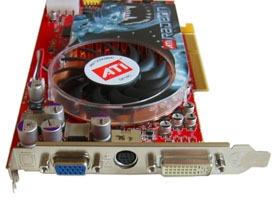 In- and outputs |
The cooling is rather simple: a large fan presses the air through the thin-bladed copper heatsink. The fan has two modes: fast and slow. The nice thing is that it stays at slow mode as good as always. The slow mode is even more quiet than the good ol’ Radeon 9700 Pro, consequently there are no problems with noise levels at all. What heat release is concerned, the card is far way cooler than the boiling Radeon 9800 XT.
On the right you can see the in- and outputs and as you probably notice ATi has continued with one VGA and one DVI, in contrast to nVidia that put a dual DVI on the NV40. We prefer nVidia’s solution.
Now most of you are curious why we only show one card when there are two cards in the review. The reason is that they are impossible to separate by just looking at them. Except for the memory caps the designs are identical. The X800 XT is equipped with 1.6ns memory and the Pro version comes with 2.0ns memory.
In general the cards specifications are identical except for clock frequencies and number of pipelines. X800 does have an ace up its sleeve though, and that is the Video In, but ATi did not bundle any cables so we could not test it.
Before continuing with some tests we need to get down to the specifications again. Let’s start with 3Dc.
One of the biggest news worth mentioning in the R420-series is “3Dc”. This is a new format of compression created by ATi themselves. It follows the fourcc-standard and works under the present DirectX-versions. This is technology that ATi gives away for free to anyone willing to implement the function in their graphics cards.
What does 3Dc do? Well, it compresses textures, though not the type of textures we usually talk about but so called Normal Maps. A normal map is a texture that contains information on how lighting and shadows in a texture should be placed. Using this technology you can simulate more details without having to increase the number of polygons. The technology has shown itself to be very popular and the amount of games that have adopted it are increasing fast. To explain it easier we simply rip one of the pictures from ATi’s presentations:

The big issue with normal maps is that they use a lot of memory which means that it eats large amounts of bandwidth. With 3Dc, you can compress this texture format down to 25% of its original size.
Please note that it’s not about automatic compression; the games have to support the technology. Upcoming big titles as Half-Life 2 for example will use 3Dc, but we have to wait and see how common it will be.
The next piece of news is nothing unique for the Radeon X800-series but we’ll take a look at “Temporal AA” anyway.
On the FSAA-front we have mainly one big improvement: Temporal Anti Aliasing. With this method you can alternate sample patterns every second or third frame. As long as the frame rate is high enough there will be an illusion that you have twice as many samples (compare with the optical effect you get when spinning a white pinwheel over black background and it looks like you have a solid gray colour).
The technology is simple, the thing that strikes me is that no one has implemented this earlier. Purely theoretically any card with support for programmable sample patterns should be able to do this. The nice thing about this is that doesn’t affect performance in any way, alternating sample patterns like this. Briefly you can say that we are able to “double” the FSAA-level from e.g. 4x to a “8x illusion” without any cost in performance. The really important thing here is that: 1. the technology isn’t officially exposed in the drivers’ control panel we have for the card, and 2: the technology work just as good on all cards in the Radeon 9×00-series (except 9000, 9100 and 9200).
To give you a good overview of how it really works you can take a look at the pictures below. The first picture shows Frame 1 with 2x sample pattern in Frame 2 we also have a 2x sample pattern but inverted and a bit displaced (only “inverting” sample pattern wouldn’t have given an optimal result), thus one frame is one screen as you see it on your monitor. Since the graphics card alternates between sample patterns between every frame there appears an effect where both seem to be visible at the same time. The bottom line for this to work is high frame rate. If the program we test with only would be running at 2 fps there would have been very obvious that the card was alternating and then the effect would appear as an annoying factor rather than as something that improved the image quality.
Below you can see a sketch of how it works (please take in mind that these aren’t actual sample patterns used but examples we have created).
|
|
|
To make the illusion complete, or better at least, you need to have a high frame rate. It’s hard to give any numbers here but ATi has set a minimum of 60 fps, and if you end up below this fps Temporal AA is automatically turned off. We should mention that Temporal AA requires Vsync to work.
How does Temporal AA work in real life? Alas far from perfect, I have to say. First of all the effect works best when the rendition is completely still, as soon as you move the positive effects are very small. In those games where the fps takes leaps up and down Temporal AA is probably not even worth considering as it will probably make things worse since it often shows as glitching borders, precisely the thing you want to obstruct with FSAA to begin with in other words. Further we couldn’t get it to work in OpenGL at all.
In those games where there is a lot of standing around or relatively slow movements and the fps is constantly high this is a really nice option but it is far from the killer feature that we expected when we first heard of this technology. And extra quality setting is always welcome though and it is of course totally up to you if you want to use it or not.
Sample patterns haven’t changed in any radical way since Radeon 9800, but if you want to compare, go here.
When it comes to anisotropic filtering we haven’t seen any improvements. For those of you who are interested in a comparison we can recommend our NV40 review here.
The testing system has remained the same since the last review.
|
Testing system
|
|
|
Hardware
|
|
| Processor/CPU: |
AMD Athlon XP 3200+ (400) Mhz
|
| Mainboard: |
ABIT AN7 uGuru (nForce2 400 Ultra)
|
| RAM: |
768 MB DDR400 @ 2-5-2-2 Timings:
3x 256 MB Corsair TWINX512-3200LL DDR-SDRAM |
|
Graphics card :
|
Reviewed cards: Reference cards : |
|
HDD:
|
RAID0: 2x 37 GB Western Digital Raptor 10 000 RPM (SATA, 8 MB cache)
|
|
Sound card :
|
Creative Soundblaster Audigy 2 ZS Platinum Pro
|
| PSU: |
Tagan TG480-U01 480w
|
|
Ethernet:
|
3Com 10/100 |
|
Software
|
|
| Operating system: |
Windows XP Professional (Service Pack 1 + updates)
|
| Graphics drivers: |
nVidia: Forceware 60.72, 60.86 and 65.04
ATi: Catalyst 4.4 and 4.5 Beta |
| Other drivers: |
nVidia ForceWare UDA Chipset Drivers v3.13
|
|
Benchmarking software:
|
Unreal Tournament 2003 (v2225) |
We have done more tests now than we usually do. We have chosen to focus on performance though. If we have enough time we will make a sequel where we exclude the performance tests and instead focus on features and image quality. We’re not promising anything, but we will do our best to make time for it.
Since the review has been written under a lot of stress some cards have been excluded from some tests. And as we earlier mentioned in our NV40-preview our 5950 Ultra has broken meaning we have very few results to show with it.
Shall we take a look at some gaming performance?
As we mentioned on page two we are also missing the new version of NV40: GeForce 6800 Ultra. In a day or two we will update with results for that card too.
We start off with an old classic: Quake 3.
|
|
Quake 3: Arena
|
|
We test the OpenGL-game Quake 3 to evaluate the performance of older titles. A large amount of titles are built on the “Q3”-engine. We use the test demo four.dm_67 in the test utility Q3Bench.
|
|
| Game engine: |
OpenGL (DX7-class)
|
| Pixel Shaders: |
No
|
| Vertex Shaders: |
No
|
| Card: |
GeForce 6800 Ultra
|
Radeon 9800 XT
|
Radeon X800 Pro
|
Radeon X800 XT
|
| No AA/AF: 2048×1536 |
256.1
|
111.3
|
153.4
|
210.0
|
| 2xAA/4xAF: 2048×1536 |
217.5
|
59.7
|
98.5
|
149.5
|
| 4xAA/8xAF: 1280×1024 1600×1200 2048×1536 |
321.3
261.5 102.8 |
202.5
129.9 35 |
213.1
161.7 89.1 |
265.4
212.2 145.1 |
GeForce 6800 Ultra is still the king of Quake 3. With quite an impressive upper hand, the NV40 performs better than X800 XT in all of the tests except 2048×1536 with 4xAA/8xAF. On the other hand we doubt that anyone would play the game with those settings, so the 6800 Ultra is ruling it all.
UT2004 turned out to be much more of a game than the 2003-version. Here we have chosen to test all levels of antialiasing and anisotropic filtering to give you an overview of how the card is affected by them in a test which requires both bandwidth and fillrate.
We have done all tests in three resolutions but as you will notice all tests in 1280×1024, all but two to be precise, failed to come off since we had problems with this resolution in UT2004. After some research we discovered that the problem was that AA/AF wasn’t activated in the game if we ran the game in the same resolution as we had in Windows (I.e. 1280×1024). After discovering this we were very stressed with getting the review done though and prioritised this rather low. We might fill in the missing results later.
|
|
Unreal Tournament 2004
|
|
UT2004 is a DirectX 8-game which puts the graphic cards under a lot of stress with large textures, high amount of polygons and more. A multiple of games are built on this engine. We are using the more graphic demanding flyby-test. We test the game on the map Torlan
|
|
| Game engine : |
Direct3D (DX8.1)
|
| Pixel Shaders: |
Yes (1.1 and 1.4)
|
| Vertex Shaders: |
Yes (1.1)
|
| Card: |
GeForce 6800 Ultra
|
Radeon 9800 XT
|
Radeon X800 Pro
|
Radeon X800 XT
|
| No AA/AF: 1024×768 1280×1024 1600×1200 |
174.5
170.8 166.1 |
188.2
145.4 105.3 |
202.2
190.9 160.5 |
203.8
203.5 185.9 |
| 2x AA: 1024×768 1280×1024 1600×1200 |
172.5
169.2 164.4 |
178
125.2 89.8 |
191.7
174.6 129.1 |
200.7
197.8 168.8 |
|
4x AA: |
172.5
167.5 149.6 |
164.7
– 77.9 |
190.2
167.6 118.5 |
198
– 137.5 |
| 8x/6x AA: 1024×768 1280×1024 1600×1200 |
78
49.5 30.4 |
133.7
– 61.7 |
181.7
130.1 92.3 |
197.4
– 129.1 |
| 2x AF: 1024×768 1280×1024 1600×1200 |
174.4
169.8 157.9 |
166.4
– 87 |
202.1
182.8 151.7 |
199.5
– 182.3 |
| 4x AF: 1024×768 1280×1024 1600×1200 |
171.2
167 136.6 |
150.6
– 76.5 |
198.8
177.7 143.3 |
198.9
– 179.5 |
| 8x AF: 1024×768 1280×1024 1600×1200 |
170.3
162.6 126.6 |
140.8
– 73 |
198.6
175.5 140.1 |
198.8
– 178.2 |
| 16x AF: 1024×768 1280×1024 1600×1200 |
169.9
160 124.4 |
139.5
– 72.3 |
198.9
175.6 139.7 |
197.9
– 177.2 |
| 2xAA/4xAF: 1024×768 1280×1024 1600×1200 |
169.4
162.8 128.3 |
137
– 68 |
188.5
158.7 118.2 |
199.2
184.3 158.2 |
| 4xAA/8xAF: 1024×768 1280×1024 1600×1200 |
164
140.7 103.9 |
116.6
– 58.8 |
185.7
145.7 109 |
195
167.6 127 |
|
8/6xAA/16xAF:
1024×768 1280×1024 1600×1200 |
53.9
35.6 23.1 |
101.1 – 50.2 |
169.2
118.4 86.9 |
192.4
160.4 119.9 |
Radeon X800 acts merciless in Unreal Tournament 2004, there is no doubt about that. NV40 only manages to squeeze past XT in one test. The thing that possibly impresses the most is X800 XT’s performance when anisotropic filtering is activated.
As you can see NV40 gets in trouble as soon 8x FSAA is activated. The reason for this is that their FSAA-solution uses Super Sampling which, in difference from Multi Sampling, works with the entire screen resulting in higher texture quality.
We continue with Open GL-game numero dos: Call Of Duty. The Quake 3-engine are one out of few that is smart enough to to let you set resolutions above 1600×1200, thus we test in 2048×1536 all the way.
|
|
Call Of Duty
|
|
Call Of Duty is one the most demanding games which are built on the old Quake 3/Return To Castle Wolfenstein-engine. With support for Vertex and Pixel Shaders, a large number of players on the screen at the same time, high resolution textures etc. We test with our own demo recorded on the map dawnville.
|
|
| Game engine : |
Open GL (DX8.0-class)
|
| Pixel Shaders: |
Yes (1.1-class)
|
| Vertex Shaders: |
Yes (1.1-class)
|
| Card: |
GeForce 6800 Ultra
|
Radeon 9800 XT
|
Radeon X800 Pro
|
Radeon X800 XT
|
| No AA/AF: 1024×768 1280×1024 1600×1200 2048×1536 |
139.1 139.4 134.2 121.3 |
117.0
108.2 92.9 57.9 |
117.5
114.7 106.2 82.7 |
118.5
116.6 111.5 95.2 |
| 2xAA/4xAF: 1024×768 1280×1024 1600×1200 2048×1536 |
137.8 132.2 121.9 96.9 |
103.5
83.4 62.9 33.1 |
112.5
99.3 84.1 55.2 |
114.2
104.8 93.9 73 |
| 4xAA/8xAF: 1024×768 1280×1024 1600×1200 2048×1536 |
136.1 125.2 109.2 64.6 |
92.0
71.4 55.3 20.9 |
105
88.7 75 53.6 |
108
97.9 86.8 71.6 |
Radeon X800 is whipped pretty good by GeForce 6800 Ultra. nVidia’s card impresses and overall has a pretty good margin with all settings except one. As we can see the difference between X800 XT and X800 Pro is pretty small in our Call Of Duty-tests. We might venture a guess that inefficient Open GL-drivers is the problem or the CPU-limitation is too hard.
The thing that impresses the most when we compare with Radeon 9800 XT are of course the huge performance gains in 2048×1536.
Judging by Quake 3 and its benchmarks nVidia has the overhand when it comes to Open GL-performance.
Another interesting thing here, which we also have noticed in the past, is that nVidia, in Open GL, performs much better during situations with CPU-limitations which in turn is something that definitely points to better drivers (I.e. the CPU spends less cycles with the graphics card-driver when we are running nVidia).
Next up is Far Cry, the game that makes the wait for Doom 3 and Half Life 2 a little less unbearable.
|
|
Far Cry
|
|
Far Cry uses high resolution textures, high numbers of polygons, advanced shader-effects, and everything else you might think of, to present what we think is the best looking graphics so far in a game. We benchmark with a demo recorded on the level Pier.
|
|
| Game engine : |
Direct3D (DX9.0)
|
| Pixel Shaders: |
Yes (1.1 and 2.0)
|
| Vertex Shaders: |
Yes (1.1 and 2.0)
|
| Card: |
GeForce 6800 Ultra
|
Radeon 9800 XT
|
Radeon X800 Pro
|
Radeon X800 XT
|
| No AA/AF: 1024×768 1280×1024 1600×1200 |
55.9
53.6 46.1 |
54.7
45.1 32.3 |
51.8
50.1 48 |
54.4
52.8 51.2 |
| 2xAA/4xAF: 1024×768 1280×1024 1600×1200 |
50
40.7 30.3 |
39.6
27.1 19.5 |
51.6
47 34.6 |
54
52.6 48.3 |
| 4xAA/8xAF: 1024×768 1280×1024 1600×1200 |
44.3
32.6 12 |
33
22.6 16.2 |
48.9
39.8 29.1 |
54.7
51.7 39.5 |
NV40 begins with being number one in both 1024×768 and 1280×1024, after that X800 XT takes over for the rest of the test. The higher the resolution and the more AA/AF the bigger the advantage over GeForce 6800 becomes. In 1600×1200 with 4xAA/8xAF X800 XT is 3.29 times faster than GeForce 6800 Ultra. The fact is that even Radeon 9800 XT beats NV40 with these settings. A driver bug from nVidia perhaps?
Worth mentioning is that NV40 during present circumstances are using the same path as NV3x in Far Cry. This results in NV40 using more Pixel Shader 1.1 than R420 does in our test. Briefly you can say that NV40 has worse image quality and performance right now. We are waiting for the next patch where this will be fixed. Possibly the extremely low results in 1600×1200 with 4xAA/8xAF are some sort of bug as well. We simply has to get back to you when patch 1.2 (and a later driver) has arrived.
Halo doesn’t need a longer introduction anymore.
|
|
Halo: Combat Evolved
|
|
Halo is what you could call the first real worthwhile DirectX9-game which of course makes it very interesting. We benchmark the performance by adding the command line -timedemo which measures performance in the game’s “cut scenes” which in turn gives a reasonable overview of how the card performs in the game.
|
|
| Game engine: |
Direct3D (DX9)
|
| Pixel Shaders: |
Yes (1.1, 1.4 and 2.0)
|
| Vertex Shaders: |
Yes (1.1)
|
| Card: |
GeForce 6800 Ultra
|
Radeon 9800 XT
|
Radeon X800 Pro
|
Radeon X800 XT
|
| No AA/AF: 1024×768 1280×1024 1600×1200 |
80.5
78.8 64 |
60
42.7 29.9 |
73.6
61.4 47.2 |
79.5
75.3 62.6 |
| 8xAF: 1024×768 1280×1024 1600×1200 |
75.2
65.9 50.7 |
53.2
36.3 25.8 |
70.6
56.9 43.3 |
77.3 72.6 59 |
Radeon X800 XT and GeForce 6800 Ultra are pretty equal, but XT takes the lead when we activate 8xAF and use a high resolution. There are no big differences though. X800 Pro is right after the giants but its performance is quite acceptable. If we look at the results in 1600×1200 we can see that both 6800 Ultra and X800 XT are more than twice as fast as the Radeon 9800 XT. Quite impressive.
Performance isn’t all, as you’ll see in our soon to be released follow up article ATi doesn’t do a very good job rendering Halo with AF to say the least.
We have had some requests of testing the graphics cards’ Open GL-acceleration when it comes to professional use. We have chosen to use SPECViewperf 7.1 and until next time we might add even another test.
|
|
SPECViewperf
|
|
We use SPECViewperf to measure professional 3D-performance. The test includes “parts” of different popular tools for professional 3D-graphic artists and it gives a pretty good overview of how the card performs in a row of different applications.
|
|
| Game engine : |
Open GL (DX7-class)
|
| Pixel Shaders: |
No
|
| Vertex Shaders: |
No
|
| Card: |
GeForce 6800 Ultra
|
Radeon 9800 XT
|
Radeon X800 Pro
|
Radeon X800 XT
|
| 3dsmax-02 |
15.1
|
12.2
|
13.2
|
13.4
|
| drv-09 |
69.4
|
25.6
|
28.1
|
28.5
|
| dx08 |
85
|
73.3
|
75.6
|
77.1
|
| light-06 |
13.8
|
13.5
|
13.5
|
13.5
|
| proe-02 |
15.3
|
11.1
|
11.3
|
11.3
|
| ugs-03 |
8.9
|
23.6
|
22.5
|
22.4
|
This test is usually one of nVidia’s real trump cards and this time is no exception. X800 XT is beaten in five out of six tests. nVidia is traditionally faster when it comes to professional Open GL-applications just as SPECViewperf indicates. If we compare Radeon 9800 XT with Radeon X800 XT we can see that there is practically no difference, our 9800 actually outperforms it successor in the last test. Something of a disappointment in other words. You should keep in mind though that good drivers are very important for performance here.
But for CA-use etc. NV40 is probably a better choice if you are looking for Open GL-acceleration that is really worth the price.
As a side note we have also tested the cards in GLParser from 3DLabs. This little program tests how compatible the graphics cards driver are with GLSlang.
| Chip/Driver: |
NV40 / 60.72
|
NV40 / 65.04
|
R420 / 4.5
|
| Passed |
20
|
70
|
131
|
| Failed |
120
|
70
|
9
|
| Crashed |
4
|
4
|
0
|
There is no doubt that ATi takes the lead when it comes to their GLSlang parser. You shouldn’t read too much into this though. As we can see nVidia has worked hard and the beta driver 65.04, which we have been able to get out hands on, performs a lot better.
Traditionally we use as few synthetic tests as possible, but now when we are evaluating two new architectures we thought that it would be interesting with some synthetic tests. Shadermark 2.1 (beta) is one of them and here we test the performance with Pixel Shader 2.0. When Microsoft releases DirectX 9.0c we will be able to evaluate Pixel Shader 2.0a, 2.0b and 3.0.
|
|
Shadermark
|
|
Shadermark is a synthetic pixelshader test where DirectX9-shaders are pressured hard. We test with standard settings in 1024×768 and also run a few rounds of “Anti Detect Mode” to ensure us of that we get honest results.
|
|
| Game engine : |
Direct3D (DX9.0c)
|
| Pixel Shaders: |
Yes (2.0, 2.0a, 2.0b and 3.0)
|
| Vertex Shaders: |
No
|
| Card: |
GeForce 6800 Ultra
|
Radeon 9800 XT
|
Radeon X800 XT
|
Radeon X800 XT
|
| Diffuse Lighting |
511
|
260
|
428
|
628
|
| Directional Light Shader |
408
|
209
|
346
|
509
|
| Point Light Shader |
397
|
214
|
355
|
521
|
| Spot Light Shader |
298
|
186
|
309
|
456
|
| Anisotropic Lighting |
403
|
204
|
338
|
498
|
| Fresnel Reflections |
368
|
203
|
333
|
487
|
| BRDF-Phong/Anisotropic Lighting |
–
|
151
|
231
|
350
|
| Car Surface Shader |
255
|
152
|
239
|
358
|
| Environment Mapping |
–
|
287
|
470
|
689
|
| Environment Bump Mapping |
521
|
258
|
400
|
568
|
| Bump Mapping |
411
|
208
|
340
|
497
|
| Shadowed Bump Mapping |
272
|
94
|
156
|
245
|
| Veined Marble Shader |
279
|
98
|
215
|
314
|
| Wood Shader |
312
|
155
|
276
|
409
|
| Tile Shader |
199
|
105
|
173
|
257
|
| Fur Shader with Anisotropic Lighting |
35
|
18
|
29
|
42
|
| Refraction and Reflection Shader with Phong Lighting |
180
|
123
|
187
|
283
|
| Dual Depth Shadow Mapping with 3×3 Bilinear Percentage Closer Filter |
–
|
34
|
55
|
81
|
| High Dynamic Range Shader (cross blur) |
–
|
80
|
134
|
201
|
| High Dynamic Range Shader (gaussian blur) |
–
|
89
|
147
|
218
|
| Edge Detection And Hatching Shader |
–
|
46
|
78
|
114
|
| Water Colour Shader |
–
|
58
|
70
|
85
|
The results speak for themselves. NV40 isn’t capable of running seven out of the 23 tests. In those tests where both cards are able to run the X800 XT is the faster card in all test but one. Eventually this might change when DirectX 9.0c is released and NV40 can use Pixel Shader 3.0 in the tests. With all probability NV40 will also be able to run all tests when the next update of DirectX will be released.
If we compare with Radeon 9800 XT we can see that the cards of the new generation has an incredible Pixel Shader-performance in Shadermark 2.1.
As it looks now Radeon is still the king when it comes to Shader performance. To ensure us of that this test isn’t fooling us we have chosen to test with program FillrateTester as well.
|
|
FillrateTester
|
|
FillRatetester measures just as the name says fillrate. In a couple of tests with everything from fixed function to Pixel Shader 2.0 the cards fillrate is tested. Also z-only fillrate is tested. The resolution we have chosen is 1024×768. The results are given in millions of pixels per second rounded off to the closest integer.
|
|
| Game engine : |
Direct3D (DX9.0)
|
| Pixel Shaders: |
Yes (1.1, 1.4 and 2.0)
|
| Vertex Shaders: |
No
|
| Card: |
GeForce 6800 Ultra
|
Radeon 9800 XT
|
Radeon X800 Pro
|
Radeon X800 XT
|
| FFP – Pure fillrate |
5948
|
2842
|
3188
|
5924
|
| FFP – Z pixel rate |
10943
|
2798
|
5352
|
7958
|
| FFP – Single texture |
1227
|
2767
|
3056
|
4526
|
| FFP – Dual texture |
669
|
1469
|
1896
|
2528
|
| FFP – Triple texture |
453
|
980
|
1191
|
1818
|
| FFP – Quad texture |
339
|
645
|
899
|
1395
|
| PS 1.1 – Simple |
2048
|
1621
|
2775
|
4103
|
| PS 1.4 – Simple |
2054
|
1621
|
2766
|
4088
|
| PS 2.0 – Simple |
3061
|
1621
|
2769
|
4091
|
| PS 2.0 PP – Simple |
2060
|
1621
|
2768
|
4096
|
| PS 2.0 – Longer |
1548
|
816
|
1399
|
2076
|
| PS 2.0 PP – Longer |
1548
|
817
|
1399
|
2080
|
| PS 2.0 – Longer 4 Registers |
1553
|
817
|
1399
|
2088
|
| PS 2.0 PP – Longer 4 Registers |
1548
|
817
|
1399
|
2076
|
| PS 2.0 – Per Pixel Lighting |
317
|
234
|
402
|
596
|
| PS 2.0 PP – Per Pixel Lighting |
424
|
234
|
402
|
596
|
When it comes to pure fillrate the fastest cards are almost identical in this low resolution. When it comes to Z-fillrate NV40 has the upper hand thanks to its renowned 32×0-mode. The fact is that R420 also has the possibility to discard more Z- than pixel values with Yper Z HD. In the rest of the tests NV40 is whipped big time by R420. Even the Pro-version of X800 performs better than 6800 Ultra in many tests.
In all tests we use the resolution 1280×1024 and 4x AA (Full Scene Anti Aliasing i.e. edge smoothening) and 8x AF (Anisotropic filtering i.e. advanced texture filtering) if nothing else is mentioned. With ATI’s card we use Quality Aniso and with nVidia’s card we use Trilinear Optimizations off and the setting Quality. We have chosen the resolution 1280×1024 (or 1280×960 in games where 1280×1024 isn’t offered) because it is a reasonable setting when it comes to performance but also because most of our readers have monitors that can handle this resolution.
In those tests where 1280×1024-4xAA/8xAF turned out to be too demanding we have chosen to lower resolution to 1024×768 and then lower and finally deactivate AA/AF until we reach a playable level of performance.
After the actual performance tests we have spent about 30 minutes (in some cases much more) really playing the game to check how it works in real life.
|
|
Quake 3: Arena
|
|
We test the Open GL-game Quake 3 to evaluate the performance of older titles. A large amount of titles are built on the “Q3”-engine. We use the test demo four.dm_67 in the test utility Q3Bench.
|
|
| Game engine : |
Open GL (DX7-class)
|
| Pixel Shaders: |
No
|
| Vertex Shaders: |
No
|
|
||||||||||||||||||||||||||||||||||||||||||||||||||||||
The newly crowned Quake3-king GeForce 6800 Ultra is still champion despite Radeon X800’s honourable effort. This is clearly one of nVidia’s strongest tests which the 5950 Ultra-result is a clear proof of. The fact that X800 Pro’s lead over its precursor 9800 XT is so small is a bit of a surprise, why it’s like that we have no idea.
Subjective analysis: Sure, you don’t need 300 fps to make the game flow well. But with a 300 fps in average you also have a much higher resolution when the really demanding situations occur than a card with a 100 fps in average. There is plenty of space for higher levels of FSAA/Aniso and resolution for all cards which we saw earlier on.
|
|
Unreal Tournament 2003
|
|
UT2003 is a DirectX 8-game which puts the graphic cards under a lot of stress with large textures, high amount of polygons and more. A multiple of games are built on this engine. We are using the more graphic demanding flyby-test. We test two different maps in the game: Bifrost and Inferno.
|
|
| Game engine : |
Direct3D (DX8.1)
|
| Pixel Shaders: |
Yes (1.1 and 1.4)
|
| Vertex Shaders: |
Yes (1.1)
|
|
||||||||||||||||||||||||||||||||||||||||||||||||||||||
UT2003 has always been ATi’s strong side for quite some time now. 6800 Ultra trumped 9800 XT but now ATi takes back the lead with their new XT while the Pro-version takes it place right next to 6800 Ultra.
Subjective analysis: The performance with the three fastest cards is nothing else than impressive, the flow is perfect. X800 XT has an advantage of about 10 fps but in the actual game we couldn’t tell any difference. Considering the small differences between X800 Pro and X800 XT here it seems like we have run into the CPU-wall despite that we only test flyby.
|
|
WarCraft 3: Reign of Chaos
|
|
WarCraft 3 is one of this year’s best-sellers which make it a good object for testing. Even if the graphics lacks extravagant technique the game is quite demanding. The performance tests are made on the first map in the WC3-demo with FRAPS.
|
|
| Game engine : |
Direct3D (DX8.1)
|
| Pixel Shaders: |
No
|
| Vertex Shaders: |
No
|
|
||||||||||||||||||||||||||||||||||||||||||||||||||||||
FRAPS returned some really odd results in the past when it comes to Warcraft 3. This time we chose to watch the fps-meter during the demo and we then realized that there is a limit of 64 fps in the game. All cards but 5950 Ultra reaches this limit.
Subjective analysis: There is no difference when it comes to playability here. All cards works equally good.
|
|
Mafia: The City of Lost Heaven
|
|
Mafia is based on a Direct3D engine (developed by the Mafia team) which uses large amounts of low-quality objects to get a high detail level. Similar 3D engines can be found in i.e. GTA. We have used Free Rides first level with FRAPS to measure the performance.
|
|
| Game engine : |
Direct3D (DX8.1)
|
| Pixel Shaders: |
Yes (1.1)
|
| Vertex Shaders: |
Yes (1.1)
|
|
||||||||||||||||||||||||||||||||||||||||||||||||||||||
NV40 doesn’t succeed in taking the lead from Radeon 9800 XT. On the other hand Radeon X800 hardly manage to do that either. As you can see we have reached the CPU-limitation here too. Modern graphics cards are apparently leaving our poor Athlon XP 3200+ behind.
Subjective analysis: The difference in performance between X800 and 6800 is wider in theory than experienced in real life. The game is rather smooth even with the 5950 Ultra despite its rather fair 35 fps.
|
|
Comanche 4
|
|
Comanche 4 is based on a self-developed Direct3D engine which uses Pixel and Vertex Shaders together with high resolution textures. The game is one of few which really “needs” a graphic card with 256 MB. We’re using the downloadable demo’s benchmark tool.
|
|
| Game engine: |
Direct3D (DX8.1)
|
| Pixel Shaders: |
Yes (1.1)
|
| Vertex Shaders: |
Yes (1.1)
|
|
||||||||||||||||||||||||||||||||||||||||||||||||||||||
nVidia is the clear winner in the Comanche 4-test. The really noticeable thing is that the Pro and XT-versions performs more or less identically.
Subjective analysis: Comanche 4 plays well on all the cards we have tested.
|
|
Counter-Strike
|
|
Counter-Strike does not need any presentation. The new 1.6 version is told to be more demanding than before, therefore we chose to test it. The test consists of a demo from the map cs_havana and a total of 18 players. |
|
| Game engine : |
Open GL (DX6-class)
|
| Pixel Shaders: |
No
|
| Vertex Shaders: |
No
|
|
||||||||||||||||||||||||||||||||||||||||||||||||||||||
Our CPU sets the limit again. For the CS-fan it doesn’t really matter what card you chose.
Subjective analysis: CS plays well on all cards. There isn’t much to say other than that.
|
|
Battlefield 1942:
Secret Weapons of WWII |
|
Developed in Sweden, Battlefield 1942 is still a very popular online multiplayer game and therefore we feel that it’s important to test it. Once again, we use FRAPS and test the downloadable demo. |
|
| Game engine: |
Direct3D (DX8.1)
|
| Pixel Shaders: |
No
|
| Vertex Shaders: |
No
|
|
||||||||||||||||||||||||||||||||||||||||||||||||||||||
Battlefield 1942 performs more or less identical with an NV40 as with an R420. 5950 Ultra on the other hand has a hard time keeping up.
Subjective analysis:All cards but 5950 Ultra pass with excellence.
|
|
Tomb Raider:
Angel of Darkness |
|
Tomb Raider is the first commercial game using DirectX 9.0 fully for rendering graphic, and that makes it an interesting test object. The test is performed using the latest patch with built-in tools. The level Prague3a was chosen for the test. |
|
| Game engine: |
Direct3D (DX9)
|
| Pixel Shaders: |
Yes (1.1, 1.4 and 2.0)
|
| Vertex Shaders: |
Yes (1.1 and 2.0)
|
|
||||||||||||||||||||||||||||||||||||||||||||||||||||||
NV40 took the first place from 9800 XT, X800 takes it back.
Subjective analysis: Tomb Raider becomes really enjoyable with the X800-cards. Compared to our poor NV38 the differences are huge. Compared to NV40 the difference is less noticeable though.
|
|
Star Wars Jedi Knight:
Jedi Academy |
|
Jedi Academy is the follow-up to the popular Jedi Knight II. It’s based on the Q3 engine but has high resolution textures and more light effects. We have tested a demo recorded by ourselves on the map Traspir where we met 7 opponents. |
|
| Game engine : |
Open GL (DX8.X-class?)
|
| Pixel Shaders: |
Yes? (1.x?)
|
| Vertex Shaders: |
Yes? (1.x?)
|
|
||||||||||||||||||||||||||||||||||||||||||||||||||||||
It doesn’t take a genius to figure out that we are limited by our CPU again.
Subjective analysis:There is no difference worth mentioning here. If we are to mention anything it is that we need a faster CPU.
|
|
Halo: Combat Evolved
|
|
Halo is what you could call the first real worthwhile DirectX9-game which if course makes it very interesting. We benchmark the performance by adding the command line -timedemo which measures performance in the game’s “cut scenes” which in turn gives a reasonable overview of how the card performs in the game.
|
|
| Game engine : |
Direct3D (DX9)
|
| Pixel Shaders: |
Yes (1.1, 1.4 and 2.0)
|
| Vertex Shaders: |
Yes (1.1)
|
|
||||||||||||||||||||||||||||||||||||||||||||||||||||||
GeForce 6800 Ultra made a real impression in Halo and so does X800 XT. The Pro-card is beaten by nVidia’s latest creation. It might be worth mentioning that X800 XT is more than 100% faster than Radeon 9800 XT!
Subjective analysis: The difference in performance is quite remarkable here. The new generation of graphics cards handles Halo excellent compared to 2003’s cards.
|
|
Max Payne 2: The Fall of Max Payne
|
|
The sequel to the incredibly popular popular Max Payne developed by finnish Remedy. We test game performance by benchmarking with FRAPS in a so called “cut-scene”. The game uses the spectacular Havok-physics engine and Pixel Shaders among others.
|
|
| Game engine : |
Direct3D (DX9)
|
| Pixel Shaders: |
Yes (1.1 and 1.4)
|
| Vertex Shaders: |
Yes (1.1)
|
|
||||||||||||||||||||||||||||||||||||||||||||||||||||||
The last game in our test series is Max Payne 2. NV40 took the lead over 9800 XT in our last review and now it’s time for ATi to take it back, besides that they also secure the second spot. Apparently we are getting closer to another CPU-limitation when we are closing up to 150 fps, which the minimal difference between XT and Pro is a proof of.
Subjective analysis: The few occasions when Radeon 9800 XT crapped out on us in Max Payne 2 are almost completely gone when we are using NV40. With X800 we can’t even see any tendencies of slacking off.
| Finishing words about the game tests |
The margins, especially when it comes to the new retail-GeForce 6800 Ultra, with which the new leader Radeon X800 XT takes over the throne as the fastest graphics card of today, are far from huge. Overall GeForce 6800 Ultra and Radeon X800 XT are relatively equal. The thing that impresses us the most is how good Radeon X800 Pro cope. It’s going to be very interesting to see how the Pro-version stands up towards GeForce 6800 and 6800 GT/Pro.
The thing that really speaks for Radeon X800 is its Pixel Shader-performance where nVidia still seems to be, theoretically at least, the underdog. The tests in FarCry also showed us that this actually seems to be the real deal. Just as with GeForce 6800 Ultra we can see the real gains first when we activate AA/AF in high resolution.
If you want to be harsh you could say that it is actually quite stupid buying any of these cards if you aren’t going to play with AA/AF activated.
nVidia still has one big hold on ATi, Open GL. As we saw NV40 placed first in almost all our Open GL-tests. Professional 3D-performance also managed better with nVidia’s card. It was also nice to see how much the new revision of GeForce 6800 Ultra increased performance.
In our eleven standard tests ATi’s XT took the lead in 5 tests with a mentionable margin. In four they are practically aligned and in the two remaining NV40 took the lead. In our detailed tests nVidia took the lead in three out of eight tests. When we add up everything there is noticeable advantage for ATi.
The big differences we saw between NV3x and R3x0 aren’t here though.
Since we are testing reference cards today, which probably aren’t the final product that will end up at your local store, you should take the results with a pinch of salt.
To overclock the cards we use Coolbits/PowerStrip and to test stability, and look for so called artefacts, we use the Mother Nature-test in 3DMark03. We have also chosen to publish the results from our nVidia’s NV40 to give you a comparison.
|
Product
|
Standard
|
Overclocked
|
Percent
|
|
nVidia 6800 Ultra
|
400/1100
|
446/1170 |
11.5/6.4 |
|
ATi X800 Pro
|
475/900
|
540/1050
|
13.7/16.7
|
|
ATi X800 XT
|
525/1150
|
540/1210
|
2.9/5.2
|
NV40 was hardly an impressive overclocker. Alas R420 reaches even lower levels and is hardly overclockable at all. We were prepared for this since ATi implied that its frequencies are already pushed to the limit. X800 Pro overclocks pretty ok, both when it comes to memory and core, which can be tuned up to about 15 % more than standard.
As I have been nagging on about earlier we were in a real tight spot when we wrote the review and did the tests, therefore overclocking wasn’t a high priority and we don’t have any tests to show for you. I will share some of my observations with you though:
Raising the core’s frequencies on the two R420-cards doesn’t make much of a difference. Not even the 13.7 percent that we overclocked the Pro-core with resulted in any bigger improvements. On the other hand, when we clocked the memory, the things really got turned around. Performance was increased at once even with really small increases of the frequency. We tested three or four settings and the results are univocal, which indicates that the cards are “suffering” from a lack of bandwidth.
When it comes to NV40 we were expecting similar results but the fact is that we were surprised with the fact that the core-overclocking seemed to do more for the performance than the memory.
Time for summary.
Finally at page number nineteen it is time to conclude our impressions of R420 and its competitor.
The most obvious point here is an outstanding performance. Radeon X800 crushes our old faithful Radeon 9800 XT, the best card from the previous generation. The performance is in general a slight bit just above GeForce 6800 Ultra, but to be honest, the margins were not bigger than that in the most tests it wouldn’t matter. What was probably more impressive was how well X800 Pro went through the tests.
 Ruby – R420 |
 Nalu – NV40 |
In the pictures above you can see the girl from ATi and nVidia. Ruby vs. Nalu, R420 vs. NV40. The question is which is the better one, but to be honest we are no judges of that. Titles like Doom 3 and possibly Half-life 2 are missing as well as DirectX 9.0c.
The performance these two architectures have is somewhat similar. Things that differ are image quality, features and physical aspects. Because of better FSAA quality we consider ATi still to be on the lead. On the feature side the NV40 looks, on paper, like the most impressive with Shader Model 3.0. ATi have not been idle though, and the Pixel Shader 2.0b is at least a step forward although not as big as the one NV40 made. What ATi has got that nVidia has not is 3Dc, which could result in improved image quality and/or performance.
Looking at the physical characteristics there is no doubt who’s got the advantage: ATi’s card is smaller, less power consuming, is slightly more silent and only need one card slot. To deliver such a great performance with a card that has a relatively low physical profile, low power consumption and generates little heat is nothing else but exceptional.
As we see it, Radeon X800 XT nicks the golden crown from GeForce 6800 just by an inch. If GeForce 6800 Ultra Extreme in combination with new drivers can make it even or take the lead again remains to see. But disregarding our opinions this is an even fight that hardly has anything in common with the fight we saw between Radeon 9700 Pro and GeForce 5800 Ultra.
As you probably have noticed we have mostly been discussing performance in this review. We’re hoping to make follow-up where we’ll put Radeon X800 XT against Geforce 6800 Ultra Extreme and make a thorough image quality inspection.


